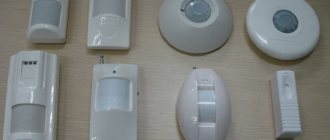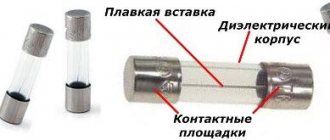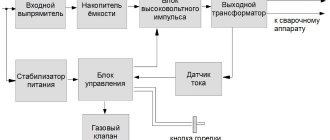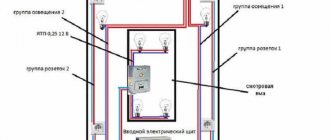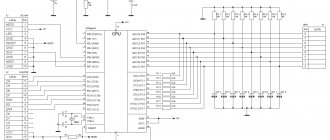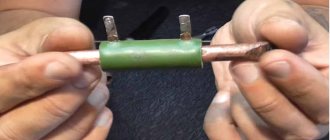general description
A presence sensor in a simplified form is a special wave detector that detects movements in a room. For example, if a person enters the coverage area, that is, the area covered by the operation of the device, then he activates the system. She, in turn, will make the mechanism work - switch it to a different state.
For example, if the light in the room is turned off, then a moving object will force the mechanism to switch to the active state, that is, the light will turn on. Or vice versa: if there is no movement in the coverage area during a specific allotted time, then the sensor system will go into deactivated mode.
Now motion sensors are often used in everyday life, and not just in offices, industrial or government buildings for their protection. This is explained by a number of advantages:
- turning on the light automatically will protect you from injury if the room is in disarray;
- if burglars break into the house, turning on the lights, as well as any activity, will scare them away.
Sensors are produced wired or wireless, the principle of their operation changes. It is used not only for security, but also for opening gates, alarms and more.
Unlike a motion sensor, a presence sensor is based on the operating principle of the Doppler effect. If you look at a physical reference book, you can understand that the essence is to capture the frequency and dynamics of wave propagation. The sensor detects the slightest change and sends it to software control devices. It, in turn, performs a switch, which manifests itself in the form of turning on light or sound. Presence sensors have a generator and an antenna; if there is no signal, the devices go into sleep mode, but turn on instantly when there is a change.
Presence sensor circuit (KP305, KT315, KU101)
Shown in Fig. 2.7 electrical circuit represents a sensitive autonomous signaling system. The device reacts if a person (or any other object of appropriate dimensions) approaches antenna “A” at a short distance (0.5 m). Of course, the sensor will operate (turn on the load in the anode circuit of the thyristor) even in direct contact with the antenna.
The sensitivity of the circuit is ensured by the use of a field-effect transistor KP305 in the input stage (sensitivity can be adjusted within small limits by changing the operating mode of the field-effect transistor by adjusting the resistance of resistor R3).
The device sensor is used to protect the front door. The supply voltage is 4.5 V (three AAA batteries), but the circuit remains operational when the voltage drops to 2.7 V and the voltage increases to 5 V.
I do not recommend that readers power the circuit from a stationary, even very stable voltage source, since it is only operational in an autonomous power supply mode. It is necessary to pay attention to the selection of the appropriate relay K1 so that the device operates reliably even when the voltage drops. The current consumed by the circuit in standby mode is extremely insignificant, 5-8 mA, which will provide (as established by practice) ten days of continuous operation in standby mode.
Rice. 2.7. Electrical circuit of the presence sensor
The sensor reacts when someone comes too close to the antenna, touches a door handle, or tries to open the door with a key. The sensitivity is so high that the alarm will work even if the burglar is wearing leather or rubber gloves. The relay will be turned on until the entire circuit is de-energized by briefly opening S1.
The compactly mounted device should be hung on the inside of the door closer to the door handle or lock (latch). The circuit elements are mounted on a small circuit board or printed circuit board: it is necessary to ensure that the length of the conductors and leads of the elements is minimal (to reduce interference leading to the possibility of false operation), and also to ensure safety measures for the field-effect transistor, eliminating the impact of static electricity on it .
To do this, you should ground the tip of a low-power soldering iron; it would not be superfluous to use an antistatic grounded bracelet. Instead of K1, you can use a buzzer from an alarm clock like “Slava” or similar. The ST-1A matching transformer, which was equipped with transistor portable radios, is used as T1.
The device is compact in manufacture, placed in a small dielectric unshielded case the size of a soap dish, only antenna “A” is exposed outside the case. The housing contains: a circuit board, a buzzer (relay), a switch S1 and batteries. The antenna is made of strong copper wire, which, inserted into the end of the housing, is soldered to point “A”. It is a piece of wire bent in the shape of a question mark (loop) with a total length of 60-90 cm. Capacitor C2, if necessary, needs to be more accurately selected to better match the length and location of the antenna.
Practice has established that the system works reliably in combination with wooden doors and metal conductive locks and latches installed on them. Unfortunately, metal doors shield and overload the low-power generator, which precludes them from being equipped with occupancy sensors. Any low-power transistor of p-p-p structure can be used as transistor VT2.
Relay K1 with an operating voltage corresponding to the supply voltage of the circuit, for example a reed switch relay RES-55, ensures stable switching of the actuator at relatively low voltages. The actuator (which is powered by the contacts of relay K1) is not shown in the diagram, however, it is assumed that the radio amateur will use a suitable sound circuit as it.
A high-frequency generator is assembled on the field-effect transistor VT1, the frequency of which will change if any large object that absorbs HF radiation approaches point “A”. Resistor R3 is connected in parallel to the feedback winding and regulates the sensitivity.
How the electrical circuit works: in the guard (standby) mode, when power is applied, the field-effect transistor in combination with the excited winding T1 generates HF oscillations. From the secondary winding T1 (the right one in the diagram), the oscillations are rectified by the diode VD1, and this positive potential keeps the transistor VT2 constantly open. The collector-emitter voltage of the transistor is practically zero. And this, in turn, ensures that the thyristor VS1 is in a constantly closed state.
An antenna in the form of a metal loop loads (if an object approaches the antenna) a high-frequency generator, its generation is disrupted, as a result, the supply of positive opening voltage to the base of VT2 is stopped, it closes, and the thyristor, on the contrary, opens and turns on the relay (buzzer). Since the thyristor is powered by a direct current source, it will remain in the open state until the circuit supplying it is interrupted or the circuit is completely de-energized.
This simple sensor has the following advantages: portability, autonomy, galvanic isolation from the AC network, low assembly and installation costs. Meanwhile, the benefits of its use are obvious, especially in cases where it is necessary to quickly and discreetly install an alarm system.
Kashkarov A.P. 500 schemes for radio amateurs. Electronic sensors.
Areas of application
The equipment is used in many areas, not just for security systems. The universal device is reliable and allows you to save a lot on other previously common parts that perform similar functions.
Living spaces
The main area of application is the smart home system. The presence sensor allows you to optimize energy consumption. When it is not needed, the light turns off.
Security systems
The security device will protect the house from burglary. It will instantly go into active mode if there is activity, even minimal.
Robotics
This area is not so common in everyday life. But it is planned to gradually introduce robotic technology into circulation, which will operate on the basis of ultra-sensitive equipment.
Diverse production processes
Controlled systems can optimize many production processes. Already now they can be found in administrative and office buildings in large cities, in kindergartens and institutes, in hotels and sports grounds.
Video surveillance systems
They allow you to turn the light on and off, and also reduce the brightness when used at night, which saves money.
Electrical energy consumption control
The simplest sensors, which some radio amateurs even make at home, are able to control energy consumption, that is, turn it off if no one is in the room.
Where is it used?
Human presence sensors save energy. When used indoors, electricity consumption is reduced by 40-55%. The lighting turns on only when there is an object. Paired with motion detectors, the devices ensure safety at work. The equipment deactivates a machine or conveyor if there is a possibility of injury to a worker.
Presence sensors are mandatory elements of a “smart home”. The equipment functions not only with light, but also controls air conditioning or heating. Options are turned on in the presence of the owner and stop working when leaving the tracking zone. Multitasking devices control the temperature of the pool or warn of strangers on the territory.
Smart home system Source datchikidoma.ru
Kinds
There are several classifications of devices. When choosing and purchasing, you should pay attention to each of them, since operational efficiency, versatility and safety depend on it.
According to the operating principle
The operating principle is the way changes are recorded. The simplest ones are sound ones, but for some purposes their power may not be enough. The principle of their operation is based on the fact that the device is triggered only when the object makes sounds. This principle is embedded in the simplest switches that operate on clap. It is clear that such an option is not suitable for a security system and robotics. Instead, more modern and convenient ones are used.
Ultrasonic
Consists of a receiver and a signal generator. Operates based on the Doppler effect. That is, when a change in frequency or wavelength occurs, a signal is sent to the receiver. Imported in alarm devices and lighting devices.
Photoelectric
The photoelectric sensor works by detecting constant light intensity. This, in turn, is reinforced either by the influence of the object, or by a change in the shape, reflection, or size of the object. There are modern photoelectric devices capable of reading information up to several hundred meters.
Capacitive
Capacitive is intended directly for receiving and processing radiation, but already reflected. Suitable for security alarm systems, but can also be used in lighting types of devices.
Acoustic
Triggered when a change in sound wavelength is detected. They turn on if the noise level exceeds the nominal level. The standard is set independently by the user.
Infrared
IR sensors are popular due to their efficiency and accuracy combined with a low price. This mechanism is activated when an IR wave appears, shifts or disappears on a photocell.
Load sensor
It turns on when the standard weight is reached at a certain location. For example, it is installed in the hallway of the entrance door. A person walks in and the light turns on automatically.
Combined
The advantage is that it reduces the number of false positives and thereby saves resources. Installs two motion detection systems (now there can be any, but usually these are acoustics and infrared or IR and ultrasonic). Light will appear only when the signal is received and processed by both detectors.
By number of blocks
An important characteristic that determines the functionality of the device.
Single position
Single position options allow you to control movements from one point. This is the most unreliable option, but in some cases its functionality is sufficient.
On-off
The option with two positions shows greater efficiency. The device controls what is happening from several points.
Multi-position
The most versatile. Suitable for security systems that turn on at lightning speed.
By installation method
According to the installation method, the equipment differs into built-in type and overhead type. The first ones are fixed in the wall or on the surface using a special hole. The invoices are nailed using snipes. It is important to secure street sensors as firmly as possible.
By method of receiving incoming
The method of receiving a signal is divided into infrared, sound and other types. Depending on this characteristic, the power parameter changes. Modern home devices are designed for 1000-2000 watts.
According to the method of transmitting the outgoing signal
The output signal determines the type of lamps used. These can be incandescent or halogen, fluorescent lamps. The response range, that is, the transmission of the outgoing signal, for a home is up to 20 meters.
Types of presence sensors
Sensors are divided into:
- Ultrasonic;
- Microwave;
- Infrared;
- Combined.
Presence sensors that only sense radiation are called passive, while those that sense and emit a signal are called active.
Separately, it is necessary to say about acoustic or sound devices. They give a signal to turn on the lighting if the noise level exceeds a specified parameter. We'll look at them a little later.
Based on the control principle, sensors can be divided into:
- Systems that allow you to adjust the response time, viewing distance, sensitivity and illumination;
- Systems where it is possible to force the lighting on;
- Automatic.
Automatic presence systems command the lighting to turn on fully automatically when moving objects are detected and turn it off when the object disappears. There are cases when a person who is in the field of view of the sensor has stopped moving (sitting down on a bench or simply standing in one place). In this case, the sensor may also turn off the light. To prevent these situations, a regular switch is included in the sensor connection circuit, with which a person turns on the lighting in forced mode.
Many light switching systems have the ability to change their performance indicators. Adjustment of devices for turning on lighting occurs using potentiometers , the regulators of which are located at the bottom of the housing. Three indicators are available for adjustment: on time, degree of sensitivity, and illumination.
The degree of illumination is set to such a value that the device is triggered only at dusk; in the daytime, there is no need for sensor activity.
Changing the sensitivity of the sensor is required for its accurate operation. The greater the sensitivity of the device, the more often it will begin to respond to movement activity. The meaning of the setting is that it reacts only to the appearance of a person in its field of visibility.
Setting the on time is required so that the device does not turn off 15 seconds after turning on the lighting. The time indicator is set at personal discretion - from 2 to 15 minutes. This is how long the lighting will remain on after it is turned on.
Based on installation location and type, sensors can be divided into:
- Interior systems, which can be mounted on brackets or built-in;
- Outdoor systems, which can also be overhead or built-in.
Devices for indoor and outdoor use are almost the same in design, only outdoor sensors have higher housing protection from external phenomena. Inside the building, the systems are installed on the walls or ceiling. Ceiling presence devices for turning on lighting, like the wall-mounted version, can be overhead (in this case, they are fixed to the surface with dowel nails or self-tapping screws) or built-in (this device is fastened using a specially made hole).
Often, sensors are mounted in a suspended or suspended ceiling. Their fastening method is similar to the method of fastening spotlights. Overhead devices are usually installed outside.
The sensors also differ:
- The viewing range is from 7 to 23 meters and further. Motion sensors for turning on lights with the greatest visibility of the action are usually mounted on the street, in large rooms or long hallways. In small rooms, systems are installed whose range is in the range of 7-10 meters;
- The load power varies from 7 to 2400 W. Different device models are designed for a specific load. When choosing them, first calculate the power of the connected lighting and be sure to take this into account. If over time additional devices are connected to the sensor, then either an intermediate relay or an additional sensor is added to the circuit. If the power of the lighting devices connected to the sensor is higher than the calculated power, then the relay outputs of the device may fail. In this case, it needs to be replaced;
- Type of connected load. These are possible lamps: fluorescent, incandescent, 12 Volt halogen and 220 V halogen with connection using a transformer;
- Device visibility angle (45-360 degrees);
- Level of protection.
External or industrial presence sensors for turning on lights must be protected from dust, high temperature and moisture. For devices that are installed inside office administrative and residential buildings, devices with a minimum degree of protection from external influences are sufficient.
How to make it yourself
The simplest sensor is made by hand. But the time and price of parts are not always justified.
Capacitive
The scheme is based on an understanding of how radiation works. The device consists of:
- transistors;
- resistors;
- pyroelectric sensor;
- microcircuits;
- Fresnel lenses.
The waves emitted by the object fall on the pyrotechnic sensor. It records them and transmits them to the control module. It generates a signal that provides the necessary functionality.
Thermal
The homemade sensor is based on a pyroelectric element. It detects the source of thermal radiation in the propagation zone and converts the information into an electrical signal. Please note that the device:
- placed away from radiators and heaters;
- cannot be used indoors with animals.
The device is integrated into other systems, for example, lighting or security.
Distinctive features of infrared motion sensors for turning on lights
The principle of operation of infrared motion sensors to turn on the light is to change thermal radiation during the movement of an object. Any living creature or other object, for example, a car, emits thermal or infrared rays that are captured by a system of mirrors or lenses, of which there are 20-60 pieces. Passing through this system, the rays hit the sensor.
There are two sensors in the device body that monitor the temperature in different places. When there is no movement within the device's coverage area, the signals are the same. At the moment the heated body moves, the signals differ, as a result of which the device is triggered.
The maximum sensitivity threshold of the device is reached when the object moves along the sensor, from left to right or vice versa. This feature should be taken into account to avoid the occurrence of “dead” zones.
Among the advantages of an infrared light motion sensor, one can highlight the precise adjustment of the control zone. The device does not respond to drafts in the room or to swaying trees outside. During operation, the device does not emit anything, therefore it does not cause discomfort and does not harm the health of humans and animals.
Infrared sensors operate on the principle that thermal radiation changes as an object moves.
However, the sensor may be triggered by the movement of warm air from a radiator or air conditioner. The device is susceptible to precipitation and ultraviolet rays, which impair the accuracy of its operation outdoors. It cannot work effectively not only at high ambient temperatures, since such radiation merges with thermal impulses emanating from humans and animals, but also at low temperatures, which contributes to the cooling of clothing and skin, causing weak radiation.
Note! Such a sensor can be fooled by hiding behind a screen or wearing a suit that does not allow heat rays to pass through.
Manufacturers
Theben AG
The German company has existed since 1921. Supplies high quality sensors that fit into the interior of any room. Engaged in the development of innovative products.
OMRON
This is a large Japanese corporation, an eternal global manufacturer of electronics. Companies look to this leader in automation products.
PD 360/8 Basic
Modern presence sensor with full coverage of the territory (360 degrees). It is easily mounted on the ceiling and has become truly universal.
ESYLUX
The company is engaged in direct supplies of lighting equipment and sensors. It specializes in the production of universal and practical devices that will be convenient for any Russian, regardless of his financial status.
Advantages and disadvantages
The main reason, which is also the main advantage, for connecting a twilight sensor to the network is to save electricity consumed by lighting devices. This is especially true for street lighting, regardless of scale.
Photo relay for street lampAlso positive points include:
- Automation of lighting control.
- Increased security level. A lighted area is less attractive to thieves.
- Possibility to refuse the services of an electrician. Easy installation is available for a novice master.
The range of sensors is complemented by motion sensors, programmable settings, and controllers. As a result, the money spent on devices quickly pays off due to economical energy consumption.
Important! Most models of light sensors are characterized by poor sealing of the housing. Dust and moisture gets inside
This leads to oxidation of the contacts and damage to the wires or the sensor itself. The solution may be to periodically remove contaminants and select a housing with a protection class of IP 44 or more.
Security class
Simple sensors have their drawbacks. It lies in the fact that the light is on even when it is not needed. That is, electricity is wasted. A cheaper solution would be to install a motion sensor.
Practical Applications
Some sensors are integrated into security and lighting systems, others work independently. Using the device allows you to optimize the production process and control resource consumption. With their help, dimming is carried out - when bright refreshment is unnecessary, they reduce the brightness of the light. Optimally combined with a volume sensor.
Device and principle of operation
The sound sensor for automatically turning on the light is a microcircuit whose main components are an audio receiver, an amplifier, an electric relay and a controller. The device operates according to the following principle:
- In the room where the sound detector is installed, a sound is heard (footsteps, voice, clapping).
- The audio receiver records the acoustic wave.
- The resulting signal passes through the analyzer.
- Next, a command is sent to close the electric relay.
- Electric current begins to flow to the light bulb - the light turns on.
- At the same time, a timer is connected to open the circuit (depending on the settings specified by the user - from several seconds to tens of minutes).
- While the light is on, the sound sensor is actually turned off and does not in any way affect the operation of the backlight system.
Modern detectors of this type are quite sensitive. Therefore, in order to exclude false alarms in a specific application location, it is necessary to perform the correct settings for this parameter.
For this purpose, there are two regulators on the body of the device. One of them sets the threshold of perceived sound. The other programs the operating time of the lamp after switching on. As a rule, a limit of 50 dB (equivalent to clapping your hands) is sufficient indoors.
Device
Optical sensors consist of a receiver and a radiation source. These are the main components, which include a number of other parts. The source can be installed in one housing or in different ones.
The source or emitter consists of 6 parts:
- The housing where all the parts are placed. It serves as protection against various types of damage. For manufacturing, brass or polyamide and hardware are used.
- The generator is designed to generate electrical impulses that are transmitted to the emitter.
- An emitter is a small LED mechanism that creates radiation in the desired range of light.
- The optics system directs the beam in the desired direction.
- The indicator shows the device is ready for operation.
The optical sensor receiver consists of 7 components:
- Optics for receiving the beam and directing it to the converter.
- The converter is used to transform the received radiation into an electrical signal.
- The amplifier is designed to increase the received signal to the maximum value at which the device operates.
- The threshold element is a regulator of the slope of the switching signal edge.
- Electronic key - current switching and protection against short circuits and overloads.
- The color indicator shows the specified characteristics of the device.
- The sensitivity regulator is needed to adjust the sensor.
The color indicator shows several states of the device:
- If there is no signal, the indicator does not light up.
- If the signal is received at the required level and the device is activated, the indicator lights up green.
- When the signal level continues to increase, the indicator turns yellow, but may change to red.
When choosing a suitable sensor for specific conditions, you may encounter only two types of design, if you do not consider special-purpose devices, for example, slot-type ones. In other cases, there are options with a cylindrical or rectangular body. And this is the only difference in the design.
